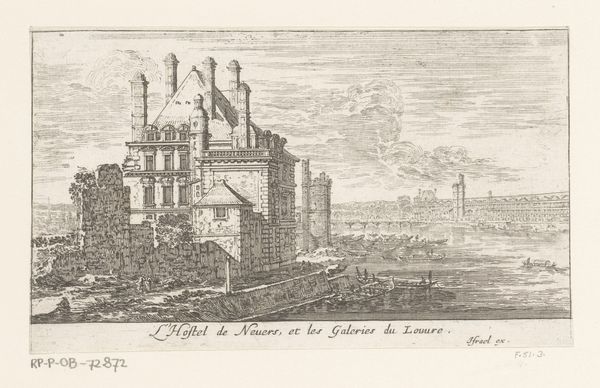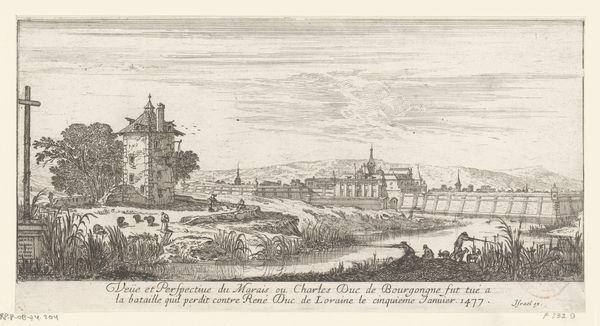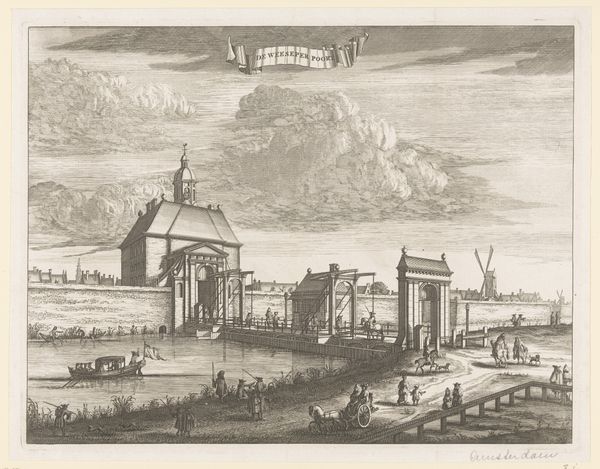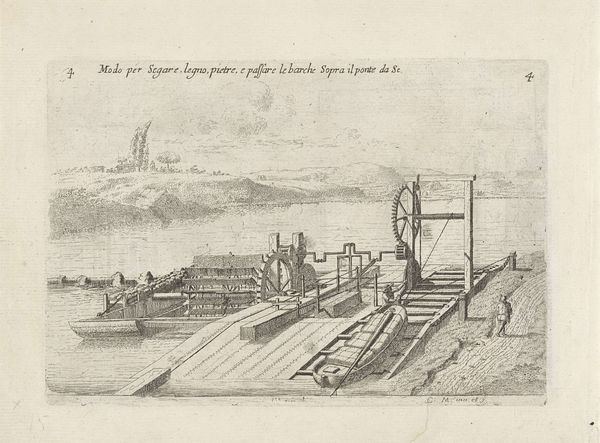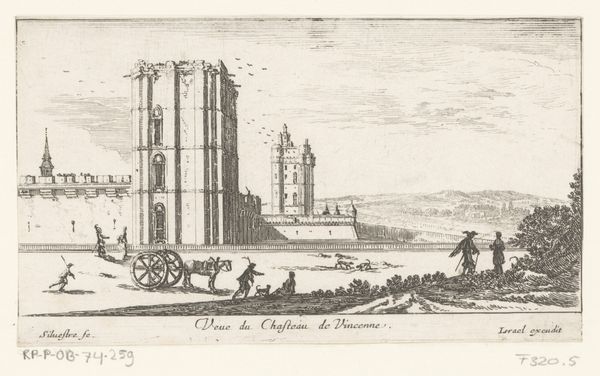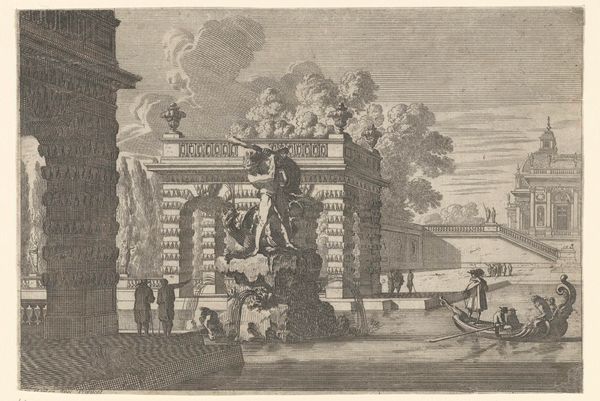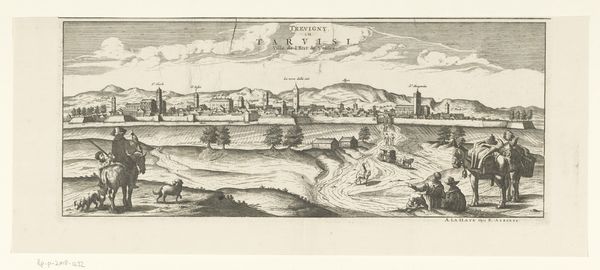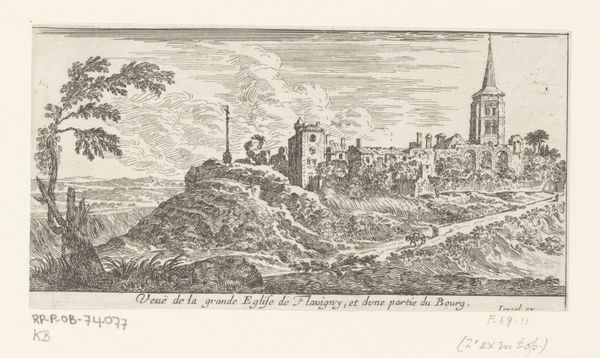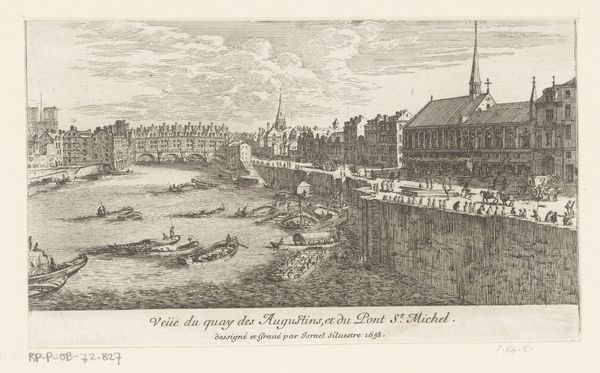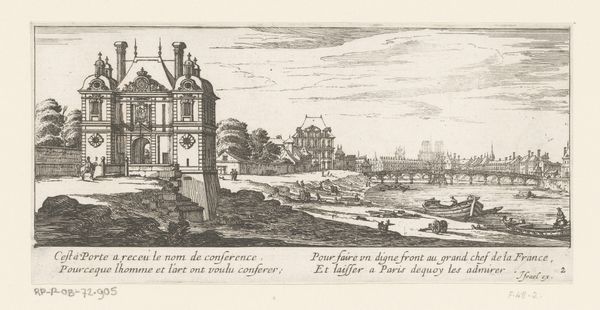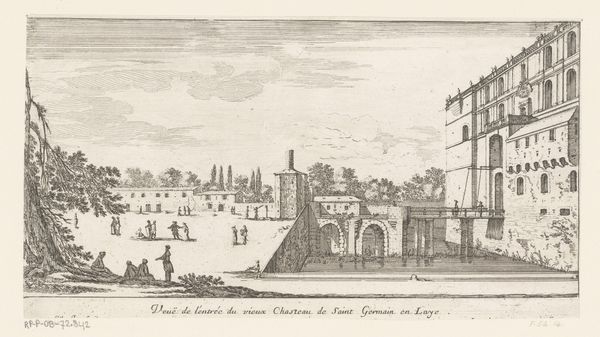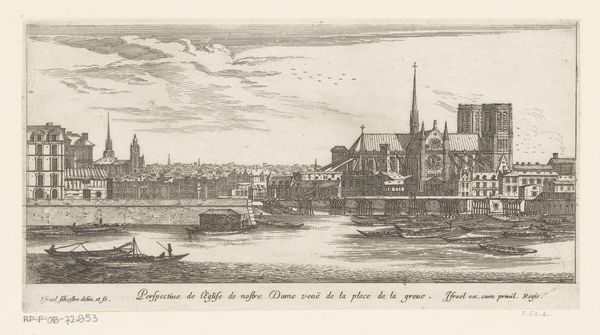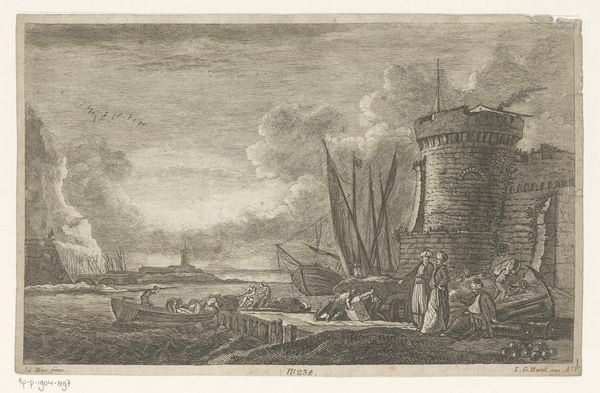
drawing, print, etching, engraving
#
drawing
#
baroque
# print
#
etching
#
old engraving style
#
cityscape
#
engraving
Dimensions: height 97 mm, width 165 mm
Copyright: Rijks Museum: Open Domain
Editor: So, here we have Israel Silvestre's "Gezicht op het hôtel de Nevers," an etching and engraving from 1652. The detail is incredible! But there's this looming feeling despite being a cityscape, almost like a statement. What's your take on this piece? Curator: That feeling you pick up on, I think, is inextricably linked to the politics of the period. Etchings and engravings weren't just passive depictions. They actively constructed a narrative. Think about the power structures at play in 17th-century France. How does Silvestre position the hôtel de Nevers in relation to the 'Île du Palais', and the broader city represented here? Who benefits from this perspective, and who might be marginalized? Editor: I see what you mean. The hotel is certainly prominent, almost imposing, overlooking everything. Does the medium itself, printmaking, influence the reading? Curator: Absolutely. Printmaking was a powerful tool for dissemination. Images like these shaped public perception. Consider Silvestre's choices - the clean lines, the detailed architecture. What impression do these elements convey about the subject? Editor: Formality and power, I suppose. There's a real sense of calculated grandeur rather than a lived-in space. The choice to present it through print also feels like mass distribution, showing the masses what to think of the higher classes' structures. Curator: Exactly! And by reproducing and circulating these images, Silvestre, whether intentionally or not, participated in solidifying a specific social order, a visual hierarchy if you will. Thinking critically about who creates images, and how they circulate, is as relevant today as it was then. Editor: That’s fascinating; I hadn’t considered the print's function in solidifying societal hierarchies back then. Now, I can appreciate Silvestre's piece for both its technical skill and historical implication. Curator: It’s about questioning whose story gets told and whose is visually erased, isn't it?
Comments
No comments
Be the first to comment and join the conversation on the ultimate creative platform.
